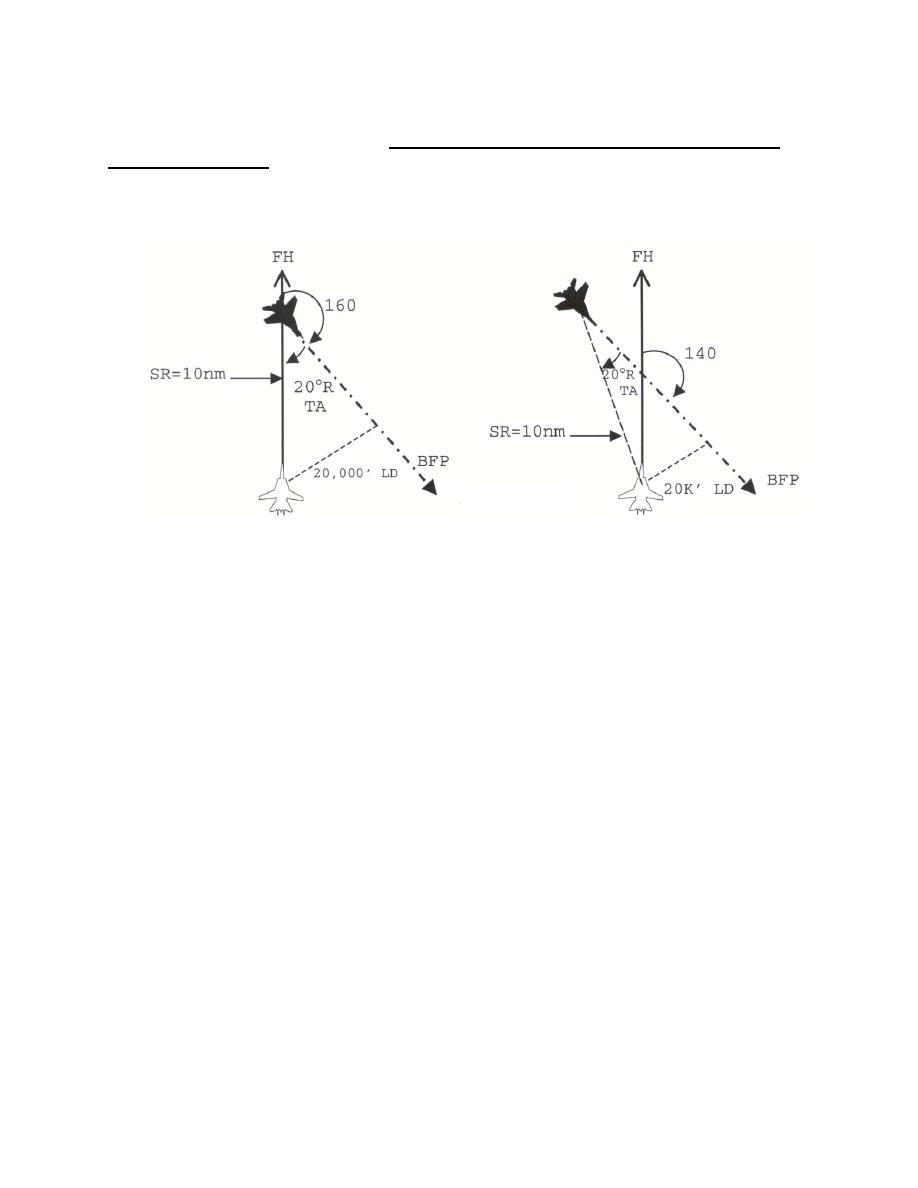 |
|||
|
|
|||
|
|
|||
| ||||||||||
|
|  INTERCEPT PROCEDURES TEXTBOOK
gameplan.
It should be emphasized again that displacement range and displacement points are based
solely on target aspect and have no absolute relation to DTG/cut (or whether the bogey is on
collision bearing). For example, a 160 DTG left to right with the bogey dead ahead at 10 nm
will be displaced to 30 right in the same manner as a 140 DTG left to right with the bogey 20
left, since both situations yield 20R TA (and 20,000' LD).
Figure 1
In a pursuit intercept, 2 nm prior to the displacement range, all CCCs will cease. Now is the
time to note any drift that would change target aspect and, therefore, affect the displacement and
counterturns. The 10 nm range is a convenient checkpoint for altitude analysis since it is easily
workable using the altitude difference formula. The fighter should have determined at this point
if the bogey is high or low with relation to the fighter. Altitude differential should be computed
and the appropriate directive commentary given to the pilot for any necessary altitude
corrections. At 10 or 8 nm (depending on target aspect), the fighter will displace the bogey to
the appropriate AO and start the counterturn sequence.
At this point, the weapons officer will command "Left Hard for displacment ... Steady Up" to
achieve the proper displacement point (in this case, 30R AO). Although most displacement
turns require 50 of turn (provided the bogey started on CB), the weapons officer never
commands "Left Hard 50." Since the turn can be any number of degrees (depending on the last
computed target aspect) the fighter simply turns a hard turn in the proper direction. Then,
leading the roll-out somewhat, the pilot will be commanded to "Steady Up." The bogey should
now be properly displaced.
86
|
|
Privacy Statement - Press Release - Copyright Information. - Contact Us |